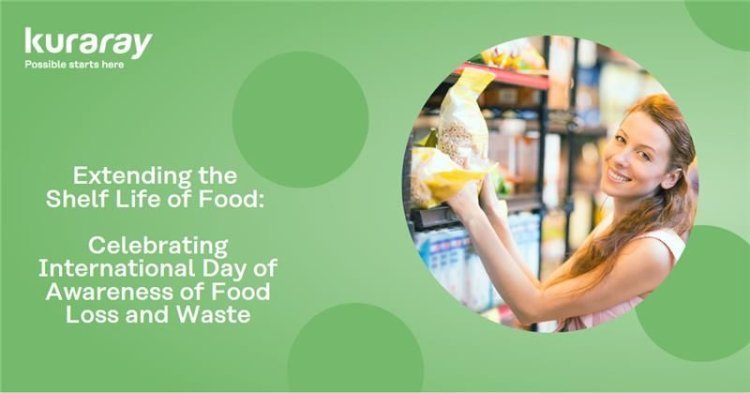Barrier Films for Food Packaging: Enhancing Shelf Life and Sustainability
Barrier films play a crucial role in food packaging, ensuring that food products maintain their freshness, quality, and safety from the point of production to consumption.

These films are designed to protect food from various external factors such as moisture, oxygen, light, and contaminants, significantly extending the shelf life of packaged foods. This article explores the types, materials, properties, and benefits of barrier films in food packaging, along with their environmental impact and future prospects.
Importance of Barrier Films in Food Packaging
Barrier films are essential in food packaging due to the following reasons:
- Preservation of Freshness: By preventing exposure to oxygen and moisture, barrier films help in preserving the taste, texture, and nutritional value of food.
- Protection from Contaminants: These films act as a barrier against bacteria, viruses, and other harmful substances, ensuring food safety.
- Extended Shelf Life: Effective barrier properties slow down the spoilage process, thereby extending the shelf life of perishable products.
- Reduction of Food Waste: Longer shelf life means less food is wasted, contributing to sustainability and economic savings.
Types of Barrier Films
Barrier films can be categorized based on the materials used and their specific barrier properties. Common types include:
- Polyethylene (PE) Films: Widely used due to their excellent moisture barrier properties. Variants include low-density polyethylene (LDPE) and high-density polyethylene (HDPE).
- Polypropylene (PP) Films: Known for their clarity, mechanical strength, and moisture resistance. Used in snack food packaging and other applications.
- Polyethylene Terephthalate (PET) Films: Offer good oxygen barrier properties and are commonly used for beverage bottles and food trays.
- Ethylene Vinyl Alcohol (EVOH) Films: Provide exceptional barrier against gases and organic vapors, often used in multilayer packaging.
- Polyvinylidene Chloride (PVDC) Films: Known for their outstanding oxygen and moisture barrier properties, used in high-barrier packaging applications.
Properties of Barrier Films
The effectiveness of barrier films is determined by several key properties:
- Oxygen Transmission Rate (OTR): Measures the amount of oxygen that can pass through the film. Lower OTR indicates better barrier performance.
- Water Vapor Transmission Rate (WVTR): Indicates the film’s ability to block moisture. Lower WVTR means higher resistance to moisture.
- Mechanical Strength: Includes tensile strength, tear resistance, and puncture resistance, ensuring the film can withstand handling and transportation.
- Clarity and Transparency: Important for consumer appeal, allowing visibility of the packaged product.
- Sealability: The ability of the film to form strong seals, crucial for maintaining the integrity of the package.
Applications of barrier films for food packaging
Barrier films are used in various food packaging applications, including:
- Flexible Packaging: Includes pouches, bags, and wraps used for snacks, cereals, and other dry goods. Flexible packaging offers convenience and improved shelf life.
- Rigid and Semi-Rigid Packaging: Used for containers, trays, and bottles. Common for dairy products, beverages, and ready-to-eat meals.
- Vacuum Packaging: Removes air from the package, often used for meats and cheeses to extend shelf life.
- Modified Atmosphere Packaging (MAP): Replaces the air inside the package with a protective gas mixture, used for fresh produce, baked goods, and pre-cooked meals.
Environmental Impact and Sustainability
The environmental impact of barrier films has become a significant concern, leading to a focus on sustainable packaging solutions. Key considerations include:
- Recyclability: Developing barrier films that can be easily recycled without compromising their barrier properties. Mono-material films, which consist of a single type of plastic, are gaining popularity for their recyclability.
- Biodegradability: Incorporating biodegradable materials that break down naturally, reducing plastic waste. Polylactic acid (PLA) and other bio-based polymers are being explored for this purpose.
- Lightweighting: Reducing the thickness of films while maintaining performance to minimize material usage and transportation emissions.
- Renewable Resources: Using materials derived from renewable sources to decrease reliance on fossil fuels.
Innovations and Future Trends
The future of barrier films in food packaging is shaped by ongoing innovations and market trends aimed at improving performance and sustainability. Key areas of development include:
- Advanced Coatings: Utilizing nanotechnology and advanced coatings to enhance barrier properties without increasing film thickness. These coatings can provide superior oxygen and moisture barriers.
- Active Packaging: Incorporating active components such as oxygen scavengers and antimicrobial agents to actively protect food and extend shelf life.
- Smart Packaging: Integrating sensors and indicators that can monitor the condition of the food, such as freshness indicators and temperature sensors.
- Sustainable Materials: Continued research into new biodegradable and compostable materials that offer comparable barrier properties to traditional plastics.
- Consumer Awareness: Increasing consumer demand for eco-friendly packaging is driving brands to adopt sustainable barrier films and improve transparency regarding their environmental impact.
Conclusion
Barrier films are a critical component of modern food packaging, offering protection and extending the shelf life of a wide range of food products. As the demand for sustainable packaging solutions grows, the development of recyclable, biodegradable, and renewable barrier films is becoming increasingly important. Innovations in material science and packaging technology promise to enhance the performance and environmental footprint of barrier films, ensuring they meet the evolving needs of consumers and the food industry.
What's Your Reaction?











![Wireless Connectivity Software Market Size, Share | Statistics [2032]](https://handyclassified.com/uploads/images/202404/image_100x75_661f3be896033.jpg)



